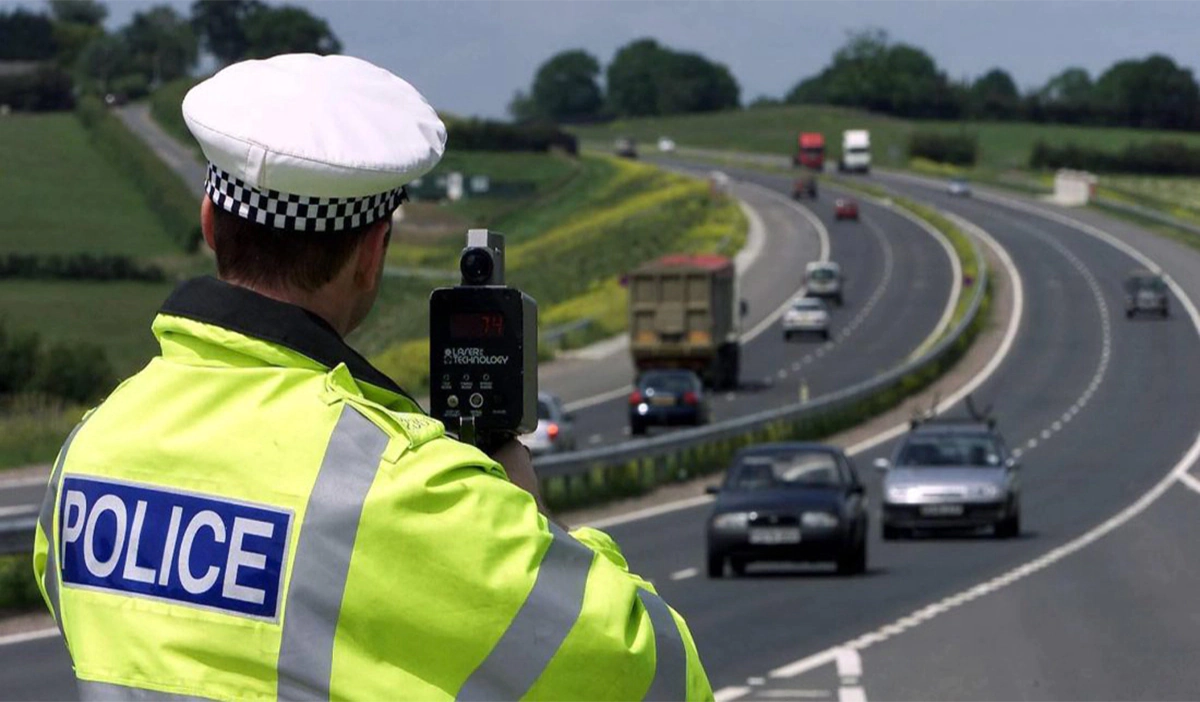Demystifying Speed Measurement
When it comes to receiving a speeding ticket in Ontario, understanding the methods that law enforcement agencies use to measure speed can help you contest the charges more effectively. With the advent of technology, several sophisticated methods are employed for this purpose. Below, we delve into the primary techniques:
Radar Speed Measurement
Radar (Radio Detection and Ranging) is one of the oldest and most commonly used methods. A police traffic radar speed-measuring device emits radio waves, which bounce off a moving vehicle and return to the device. The frequency shift of the returning waves is used to calculate the speed of the vehicle.
- How It Works: A radar gun emits radio waves, and the speed is calculated based on the frequency shift of the returning waves.
- Common Types: Stationary and moving radar devices are employed by police agencies.
- Accuracy: Though commonly used, radar measurements can be influenced by factors like the size of the vehicle, other vehicles on the road, and weather conditions.
Lidar Speed Measurement
Lidar (Light Detection and Ranging) is another popular method, particularly because of its pinpoint accuracy. Unlike radar, which uses radio waves, Lidar uses laser beams to measure speed.
- How It Works: A Lidar gun emits a laser beam towards the vehicle, measuring the time it takes for the beam to return.
- Common Types: Handheld Lidar guns are prevalent.
- Accuracy: Highly accurate but requires the police officer to have a steady hand and clear line of sight.
VASCAR (Visual Average Speed Computer and Recorder)
VASCAR is a technique that doesn’t rely on radio waves or lasers but employs simple mathematics. An officer uses the VASCAR system to measure the time it takes for a vehicle to move between two predetermined points.
- How It Works: The time taken to travel between two fixed points is recorded and used to calculate average speed.
- Common Types: This method is manually operated and generally used in areas without heavy traffic.
- Accuracy: The accuracy can be affected by human error, as it is dependent on the officer’s ability to operate the system effectively.
Aircraft Patrol
In Ontario, aircraft patrol is sometimes used for traffic enforcement. A police officer in the aircraft uses markers on the highway to measure the time taken for a vehicle to pass between them.
- How It Works: Aerial surveillance is used in conjunction with ground units to enforce speed limits.
- Common Types: Fixed-wing aircraft are typically used for this purpose.
- Accuracy: Generally accurate but costly to operate, making it less commonly used.
GPS Speed Measurement
Though not as commonly used for traffic enforcement in Ontario, GPS technology can also be utilized to measure a vehicle’s speed.
- How It Works: The GPS calculates speed by measuring the distance travelled over time.
- Common Types: Not commonly used in Ontario for the purpose of issuing a police officer speeding ticket.
- Accuracy: Highly accurate but not commonly relied upon for traffic enforcement.
Pacing as a Speed Measurement Technique
Pacing is another method of speed measurement, although it is not as technologically advanced as the ones discussed earlier. In this method, a police officer follows a vehicle at a consistent distance for a certain period, matching the speed of the suspect vehicle to determine its velocity.
- How It Works: An officer trails the vehicle in question, maintaining a constant distance while matching its speed. The speedometer of the police vehicle is then used to assess the speed of the vehicle being paced.
- Common Types: This method is usually employed when more sophisticated equipment is not available or not operational.
- Accuracy: The accuracy of pacing can vary due to several factors including human error, the calibration of the police vehicle’s speedometer, and road conditions.
Legal Considerations Specific to Pacing
If you receive a speeding ticket in Ontario and pacing was used as the measurement method, it’s essential to understand the legal considerations. The police officer must maintain a constant distance during the pacing, and their vehicle’s speedometer must be calibrated and tested for accuracy. Also, the officer is required to pace your vehicle for a sufficient distance to establish a reliable speed reading. Any inconsistencies or deviations in these factors could be grounds for contesting the ticket.
Legal Considerations
When contesting a speeding ticket, understanding the intricacies of these methods is crucial. Calibration, operator error, and environmental factors can all affect the accuracy of speed measurements. Armed with this information, you are better equipped to challenge the ticket.
Conclusion
Knowing the methods used for speed measurement not only prepares you for the unfortunate event of receiving a speeding ticket but also arms you with the information needed to contest it effectively. Being aware of the advantages and limitations of each method can be pivotal when challenging a ticket. For those facing charges under the Highway Traffic Act in Ontario, knowledgeable assistance in the legal realm can be invaluable. Therefore, consider seeking help from Traffic Paralegal Services, a paralegal firm wholly committed to fighting such tickets and charges, to better your chances of a favourable outcome.







Leave A Comment
You must be logged in to post a comment.